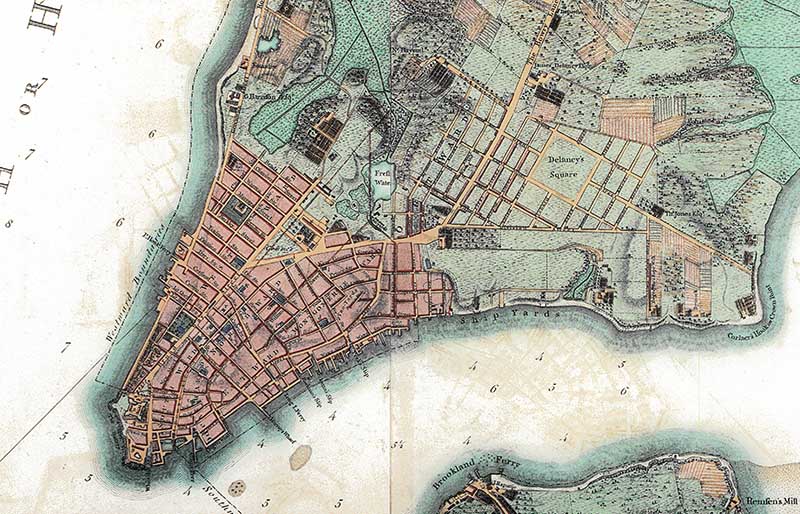
New York City has a long tradition of incorporating more than just a geographic location into a street name, dating back to streets in the Financial District that were named for commercial practices by early colonists. Whether honoring politicians or war heroes, these street names in neighborhoods all over the city offer a glimpse into the history of the neighborhood, how it was developed and who was critical in doing so.
And despite all of the numbered streets in New York, there are many named streets that, when seen as a collected group, create a common theme within their neighborhoods, from the Bronx to Brooklyn.
1. Greek and Roman Empire in the Bronx

Virgil Place, Homer Avenue, Cincinnatus Avenue, Caesar Place, and Cicero Avenue of Castle Hill in the Bronx all run east-west for short distances, and take their names from ancient Greece and the Roman Empire. John McNamara wrote in his 1978 book History in Asphalt: The Origin of Bronx Street and Place Names that this small cluster of roadways all owe their street names to one realtor.
These east-west streets can attribute their classically inspired names to Solon L. Frank, a prominent realtor who developed this area in the early 1900s. McNamara suggests that it was Frank’s first name Solon, the same as an ancient Athenian statesman, which led to his desire to honor the ancient Greek and Roman poets and rulers.
The other east-west avenues that bound this group of classically-themed streets were all surveyed and named before Frank was working in the area. Lafayette Avenue, named after the Marquis de Lafayette, and Randall Avenue, named after the Civil War Brigadier General George W. Randall, were both named after war heroes. Seward and Lacombe Avenues both honor old New York judges from the 19th century, McNamara claimed. The Seward named here, Samuel S. Seward, was father to the more famous William Seward, Secretary of State for Abraham Lincoln and purchaser of Alaska.





